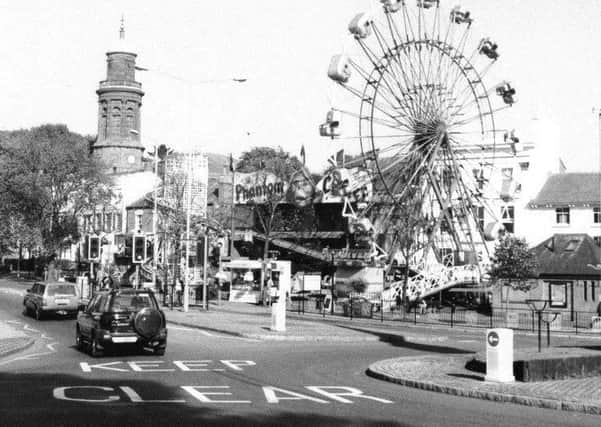Look back with Little: Michaelmas Fair still upholds great tradition


This three-day event is the sole survivor from a time when fairs were more numerous and varied in their nature
The year 1836 is a good point from which to explore changing characteristics and frequency. This is because 1836 was when the collection of market tolls was discontinued and fairs became in practice toll free. Most of these were more like special markets held for specific reasons.
Advertisement
Hide AdAdvertisement
Hide AdIn his History of Banbury, Alfred Beesley, writing shortly after the change, listed the adapted arrangements. There were to be 13 fairs starting in January with the ‘Old Twelfth’, otherwise known as the Great Horse Fair. Third Thursdays were the occasion of fairs in the next three months of which March was devoted to the hiring of servants. Unsurprisingly Holy Thursday was a great holiday fair.
Four one-day occasions characterised each of the months June to September before the much-awaited great hiring fair on the first Thursday after Old Michaelmas day (our current Michaelmas Fair).
Dr Plot writing in 1677 had some interesting observations on this much-awaited fair. Young people of Banbury and Bloxham knew it by distinctly different names.
The former used the term ‘Mop’, whilst those in the village referred to the ‘Statute’.
Advertisement
Hide AdAdvertisement
Hide AdServants were not always fortunate in their choice of master and sought a change for the better by attending a Runaway Fair at the end of October on Old St Luke’s Day. Two remaining fairs brought the total to 13 and the year ended with the cattle fair on the second Thursday before Christmas.
A marked characteristic of these fairs was the way they brought town and country people together. Dr Barrie Trinder puts much emphasis on this fact in his book Victorian Banbury when in a sentence he acknowledges that ‘countrymen demonstrated by their attendance the importance they attached to the market town, and the town’s economic dependence on the countryside was clearly evident’.
By 1939 there was only the Michaelmas Fair to organise. At the outbreak of war the borough council had to make a difficult decision.
Allowing the fair to happen could possibly have uplifted spirits at a dark time. However readers of the Banbury Advertiser ‘Round the Cross column for October 5 were confronted with the almost inevitable news that ‘owing to the emergency the annual Michaelmas Fair will not be held’.
Advertisement
Hide AdAdvertisement
Hide AdMembers at a full council meeting agreed to return £25 to Mr W Wilson organiser of the fair and tenant of the site.
This money had secured him the necessary space on which to hold the fair.
Those people who had eagerly awaited the annual event could only draw solace from a regular Advertiser feature called ‘Peep into the Past’.
In their review of late 19th century fairs they made no secret of their opposition to hiring activities.
Advertisement
Hide AdAdvertisement
Hide AdTheir comment ran as follows: ‘it was a healthy sign that Banbury Fair is losing, year by year, the characteristic of an Alexandrian slave market’. In the same breath they welcomed the opportunities for employers and servants to meet in appropriate rooms such as the Cadbury Memorial Hall in Bridge Street.
By this time the fair’s main emphasis was on pleasure: sales of horses in the Horse Fair were limited except for those of exceptional quality that continued to fetch a good price.
Special mention was also made to inconvenience to farmers during their market day activities.
Instead of being able to rely on the preferred Cow Fair close to the Town Hall, they had to attend auctions in Broad Street, Newland, Fish [George] Street, and a portion of Marlborough Road ‘Each was well-filled with store cattle and other beasts’.
Advertisement
Hide AdAdvertisement
Hide AdIn the years just before World War II the trend was towards fewer traditional attractions and more of a spectacular nature which required greater expenditure.
This trend has continued to the present day, and in 2018 I am sure we can look forward to new rides bringing even greater challenges to the force of gravity.